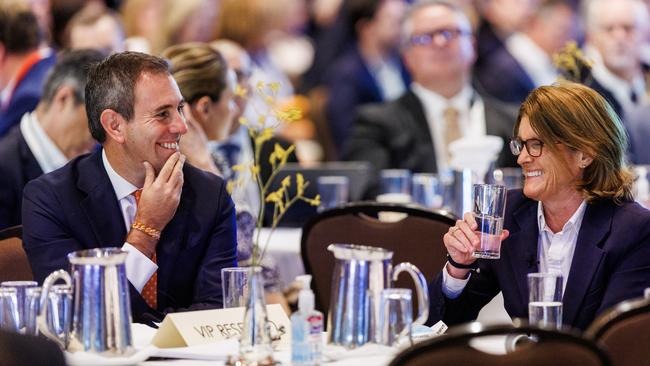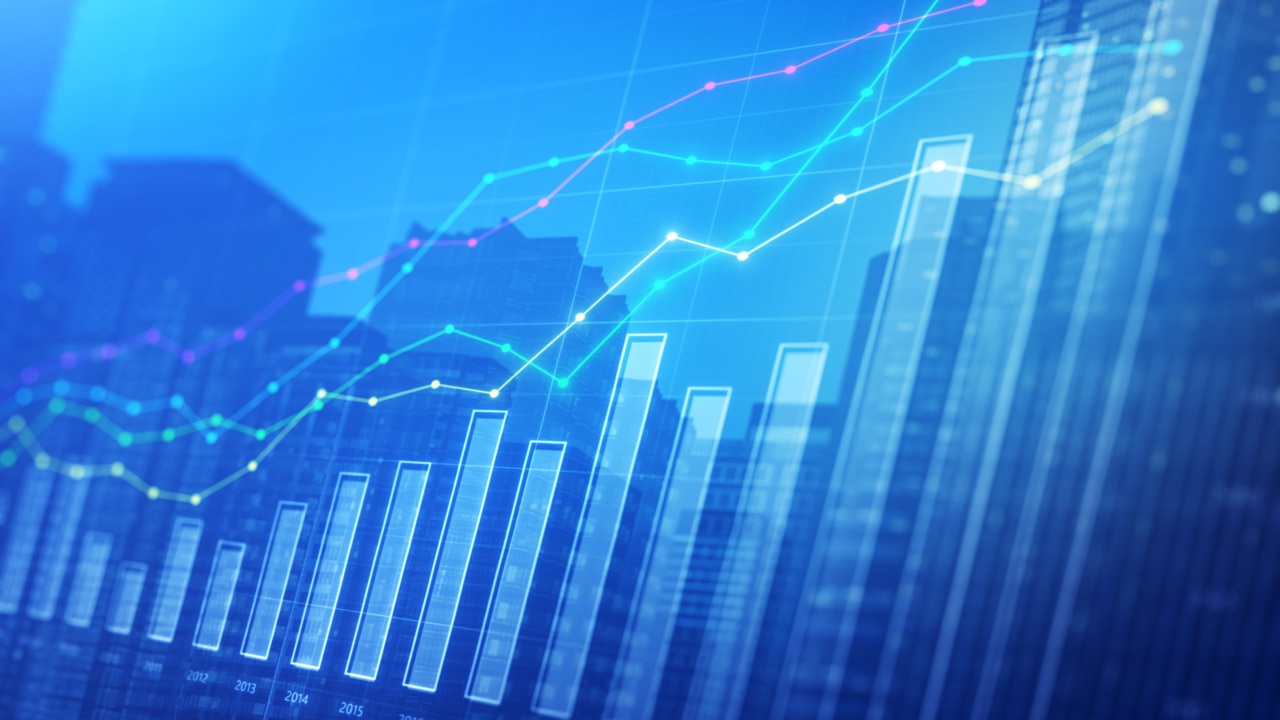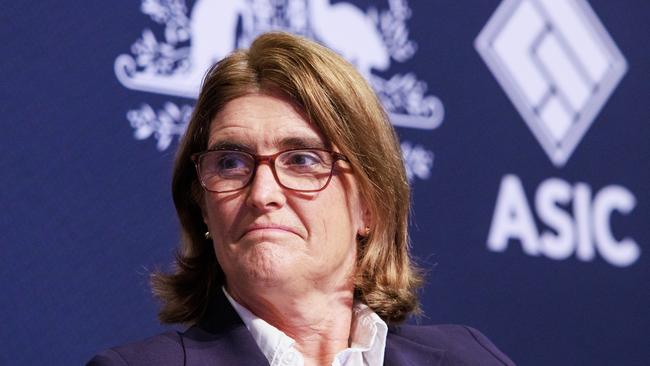Reading inflation pulse is more difficult amid an imported population boom
The influx of foreign students, workers and tourists is hindering the RBA’s ability to read the underlying health of the economy.

The influx of 10,000 foreigners a week with work rights over just four months is hindering the Reserve Bank’s ability to read the underlying health of the nation’s economy and raising fears it could inflame homegrown inflation.
As the central bank’s board meets on Tuesday for the final time this year, the record surge of international students, working holiday makers and temporary workers is adding to total spending at a time when disposable family incomes are squeezed by higher inflation, taxes and mortgage interest costs.
The post-pandemic population boom has caught the Albanese government, Treasury and monetary officials by surprise, producing a spike in home values and rents, and exposing debt-laden states to unrelenting pressure on services.
It comes as ANZ boss Shayne Elliott has cautioned the country needs to prepare for interest rates to be higher for longer, with baked-in government spending pressures through to the end of the decade from infrastructure, housing and even the climate transition to make inflation sticky.

The big-four bank boss expects there could be another official rate hike early next year, with the Reserve Bank determined not to let inflation get away again.
Mr Elliott also warned – as growing migration adds to short-term economic pressure – that Australia must choose between lower interest rates and big spending infrastructure programs.
“You have to stand back and forget next year – just think about over the next five years. Everything Western governments, including Australia, want to do is fundamentally inflationary,” he told The Australian.
Figures from the Department of Home Affairs reveal the number of temporary visa holders in Australia with employment rights – students, graduates, backpackers, transient workers and those on bridging visas – rose by 172,000, or 12 per cent, in the four months to the end of October.

Since the start of July, the number of people here on student visas has increased by 104,000, or almost a fifth, to stand at an all-time high of 673,000. There were 708,000 New Zealand citizens present at the end of October, down by 10,000 from a record set the previous month, with our Tasman neighbour now confronting a migration-led population and home-price boom that has alarmed its central bank.
The figures come as Labor prepares to launch next week its long-awaited response to the Parkinson migration review and Jim Chalmers releases the mid-year economic and fiscal outlook, including new estimates from Treasury for the underlying cash balance, economic growth, export prices and net overseas migration.
RBA officials fear the ongoing strength of spending by temporary settlers and the customary arrival of tourists over the summer could see businesses in the services sector, where high inflation has been persistent, pass on higher costs to consumers and shift community price expectations.
Inflation in the year to October eased to 4.9 per cent, down from a peak of 8.4 per this time last year, although the latest monthly consumer price index does not capture a large chunk of services pricing. Commonwealth Bank head of Australian economics Gareth Aird said in the short-run rapid population growth was making the RBA’s job more difficult, as it put pressure on key parts of the inflation equation, especially rents. “It means the RBA has to try harder to bring down growth in other parts of the consumer price index basket,” he said.
“Incredibly strong population growth is having a big impact on the housing market, as home building has not kept pace.
“But the boost to labour supply is also helping to push down wages growth, which will ease as unemployment rises next year.”
An overwhelming majority of financial market participants and economists believe the RBA will keep the cash rate on hold at 4.35 per cent, while the OECD sees no more hikes in this monetary tightening cycle, with cuts expected from mid next year.

The RBA’s policy meeting in February will likely be “live”, as the experts say, given its board will have more evidence about what governor Michele Bullock now characterises as a “homegrown” inflation problem, as well as data on the resilience of wages, employment and domestic demand, which includes government spending and business investment.
On Wednesday, the Australian Bureau of Statistics will publish national accounts for the September quarter, with economists estimating growth to lag the increase in population.
Mr Aird said when you consider Australia’s performance in aggregate terms compared with our peers, “we are looking pretty good”. “But when you see how that translates into per capita incomes, which is what households actually experience, then it’s not so good,” he said.
Westpac senior economist Andrew Hanlan said “the Australian economy is stuck in the slow-lane”, with declining per capita income due to “the intense headwinds of high inflation and sharply higher interest rates”.
“We expect quarterly output growth will again print at 0.4 per cent, matching the March and June period outcomes,” Mr Hanlan said, adding annual growth thus slows to 1.8 per cent, tracking below population growth of around 2.5 per cent. A week ago, Ms Bullock told a global gathering in Hong Kong that the central bank’s 13 interest rises since May last year had generated “a lot of political noise and a lot of noise from the general public”.
Amid the mixed signals of an economy that is slowing but with a population that is currently growing at a world-leading rate, officials are trying to assess the heartbeat of inflation, which sits way above the RBA’s mandated 2-3 per cent target band.
At its board meeting last month, when it raised the cash rate for the first time since June, the RBA considered the case for a pause, given growth was slowing, annual inflation was easing and the future was clouded by uncertainty.
“Members observed that the surge in population growth in Australia over the prior year was making it more challenging to assess the underlying resilience of the economy,” the board minutes said.

“Members noted that the upside surprise on population growth had added to both demand and supply; as a result, the net effects on inflation had been largely offsetting in aggregate but may have varied across sectors.”
In its latest appraisal of the economic outlook for Australia, the Paris-based OECD said tourism and income from foreign students, which is largely dependent on Chinese economic conditions, would underpin 1.9 per cent growth this year and 1.4 per cent in 2024.
Typically, by the end of December, around 150,000 foreign students will have returned home, either to see family during the summer break or because they’ve finished their course.
But Australia’s population swells with tourists over the latter months of the year, with the number of people on visitor visas rising from about 300,000 at this time of year to 600,000 by New Year’s Eve.
The RBA said in its November statement on monetary policy that “while the growth of consumption by permanent residents has been weak, growth of total consumer spending in Australia – which includes spending by temporary residents – remains around its pre-pandemic average.”
The monthly value of retail spending per capita has been resilient over the past year, essentially stuck at 22 per cent above its pre-pandemic level.
But when you factor in inflation and population growth, the volume of retail trade is only 5 per cent above its early 2020 level.
“The ongoing rebound in international student and tourist numbers is also expected to support growth in the near term and provide some offset to weak spending by Australian residents,” the RBA statement said.
“Robust total spending in Australia is expected to continue supporting demand conditions for businesses and impact firms’ ability to pass on cost pressures to customers.”
The boost in labour supply, largely driven by foreign students and backpackers, and robust job gains are also feeding into Canberra’s income and sales tax take, with economists now pencilling in a second straight federal budget surplus.




